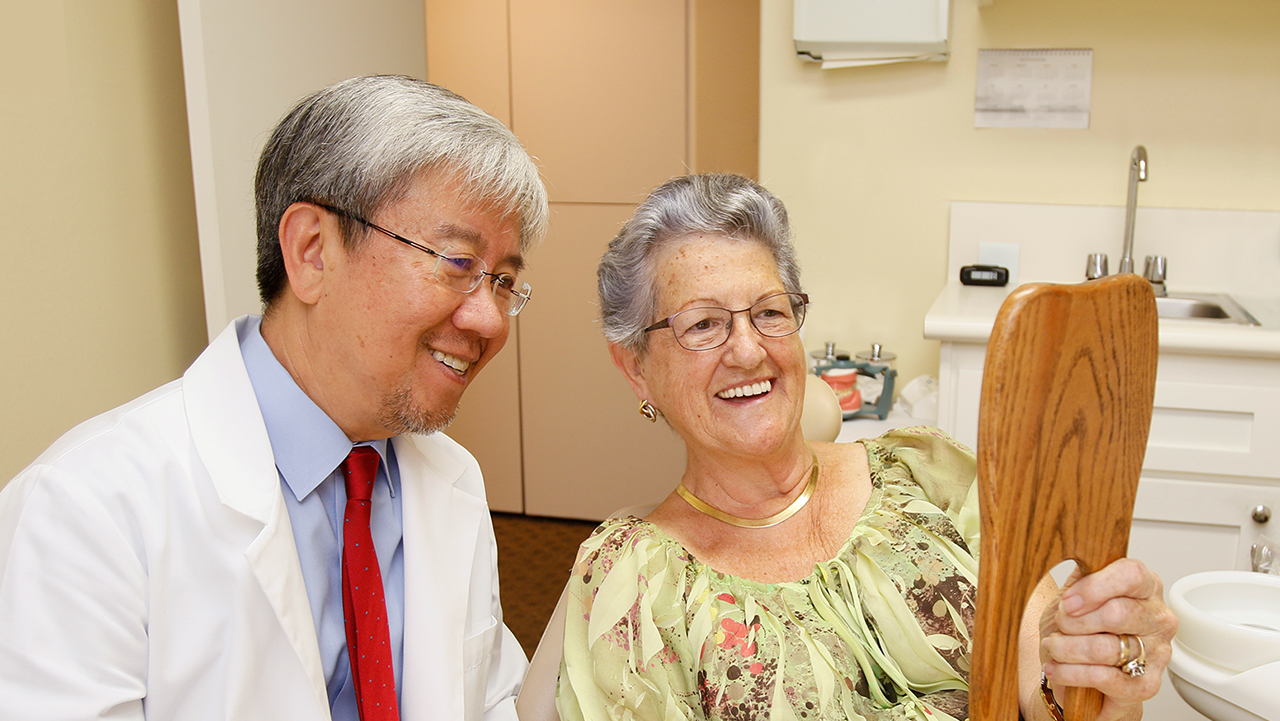Related Dental Articles
- Gordon J. Christensen, DDS, MSD, Ph.D.: “Mini Implants: Insight from Dr. Gordon Christensen”
- Roger P. Levin, DDS: “5 Ways to Increase Implant Case Acceptance”
800-854-7256 USA
Discover which patients in your practice can benefit the most from mini implants.

My journey with mini implants began in the early 1990s when I saw them for the first time in an advertisement. I was at first skeptical of any implant that differed from the conventional ones I was already placing regularly in my practice. However, at the same time, many of my patients couldn’t receive conventional implant treatment because of the cost, duration of the treatment, invasiveness of the surgery, limited bone availability or multiple systemic issues.
With such a clear need for an alternative to conventional implants in these specific cases, I decided to complete the necessary training to start providing mini implants for patients on a case-by-case basis. The results were staggering: Treatment acceptance rates soared, patients had very short recovery times and some patients couldn’t believe that we could easily accomplish same-day denture stabilization. I continued to place a lot of conventional implants (and I still do to this day), but I also finally had a solution for the patients who required a different treatment plan.
Many of my patients couldn’t receive conventional implant treatment because of the cost, duration of the treatment, invasiveness of the surgery, limited bone availability or multiple systemic issues. I decided to complete the necessary training to start providing mini implants for patients on a case-by-case basis.
That’s what makes mini implants so relevant to every dental practice today and for the future of implantology as a whole: We can now offer our patients more treatment options that are tailored to their specific needs. Presenting these treatment plans to patients is simple and effective when you focus on what makes small-diameter implants different from conventional treatment. For patients who qualify for this treatment option, you can convey these benefits:
Ultimately, providing small-diameter implants is a matter of knowing which patients are suitable candidates for this treatment alternative. Always bear in mind that mini implants are ideal for patients who cannot receive conventional implants due to medical, anatomical or financial limitations.
In the past, before I started with small-diameter implants, many patients who came to see me were denture-wearers who I would generally send away with standard denture treatments that would often take six months or longer to complete. Now, I can retrofit nearly any patient’s good, existing denture to seat over small-diameter implants, resulting in increased stability and dental function. It’s a monumental change in clinical treatment strategy, and qualifying patients deserve to receive it.
Ultimately, providing small-diameter implants is a matter of knowing which patients are suitable candidates. Always bear in mind that mini implants are ideal for patients who cannot receive conventional implants due to medical, anatomical or financial limitations."
But the patients receiving treatment aren’t the only ones benefiting from mini implants. When dentists choose to add small-diameter implants to their armamentarium, new opportunities arise for them as well:
Thirty years ago, when I first started with small-diameter implants, any dentist was capable of reaping these benefits with the right clinical education — and the same is true today. Thankfully, updated education, successful case examples and proven clinical techniques are even more readily available than in the past. I personally would take advantage of today’s mini implant opportunities through Glidewell Clinical Education, which offers a wide range of hands-on, continuing education courses.
Through the years, I’ve found the Glidewell Clinical Education program to be so vital for furthering the future of small-diameter implants that I have begun my own two-day course, “Mastering Mini Dental Implants.” No matter the individual skill level, course attendees can learn predictable and proven techniques in mini implant dentistry to improve clinical success, patient satisfaction and profitability. As part of this dental CE course, attendees also receive a free patient education model (valued at $495) to utilize for building their practice and encouraging patient acceptance.
For all of my small-diameter implant cases, I use the Inclusive® Mini Implant System. These self-tapping, threaded titanium implants are designed for both provisional and long-term use, a versatile feature to meet the individual needs of each patient. With available diameters of 2.2 mm, 2.5 mm and 3.0 mm, Inclusive Mini Implants require less available bone for implant placement, reducing or eliminating the need for costly, extensive grafting procedures. Because of a simple and effective O-ring retention system that allows for up to 30 degrees of divergence between implants, Inclusive Mini Implants can accommodate new or existing dentures and provide edentulous patients the comfort, confidence and quality of life they deserve.

Inclusive Mini Implants are indicated for patients who have medical, anatomical or financial complications. In this case, four Inclusive Mini Implants were placed in the patient’s mandible, allowing for an implant overdenture that brought confidence back to the patient’s smile and restored his ability to effectively chew food.
It’s increasingly evident that the future of mini implants is bright. Although small-diameter implants are not indicated for all patients and cannot be a substitute for conventional implants, mini implants continue to enable more dentists to treat more patients in need. After all, one size does not fit all in implant dentistry. I have watched small-diameter implants come a long way since my start with them in the 1990s, but their intended purpose remains the same: to give patients an implant treatment option that fits their specific needs. Join me at my next in-person course to see how offering mini implants can make a remarkable difference for your patients and your practice.
Related Dental Articles
Inclusive is a registered trademark of Prismatik Dentalcraft, Inc.
Send blog-related questions and suggestions to hello@glidewell.com.


